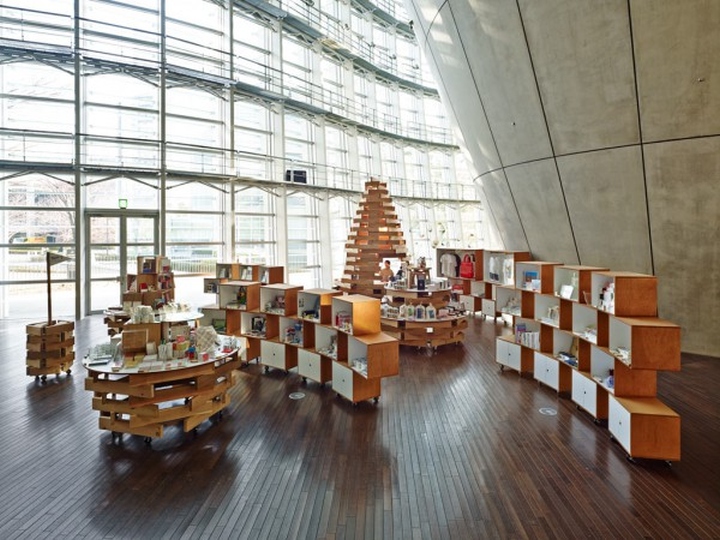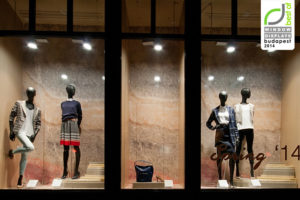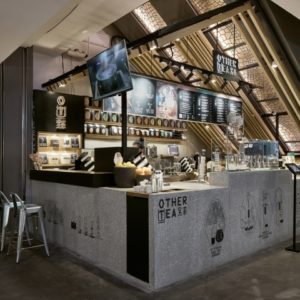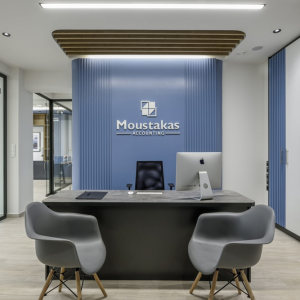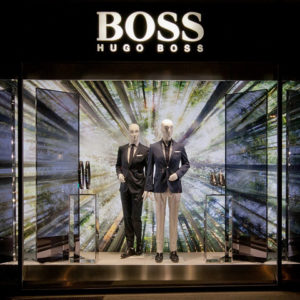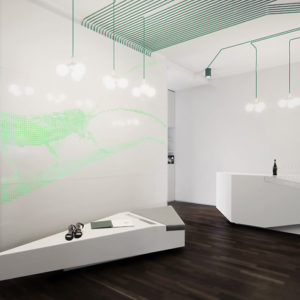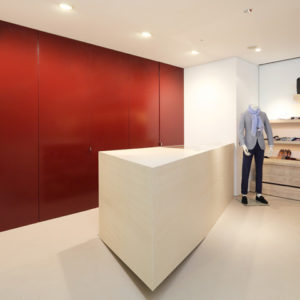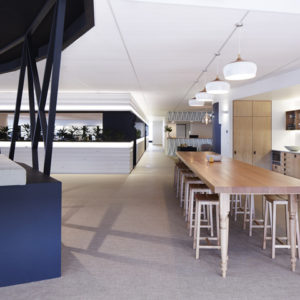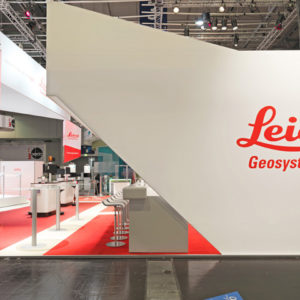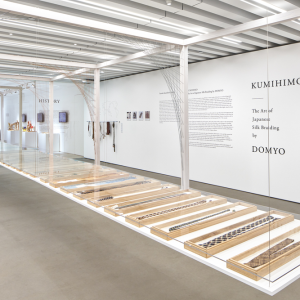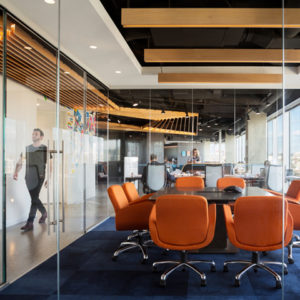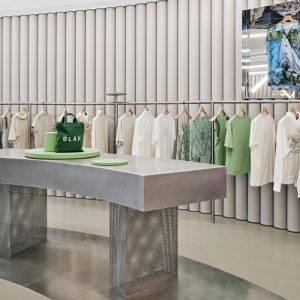
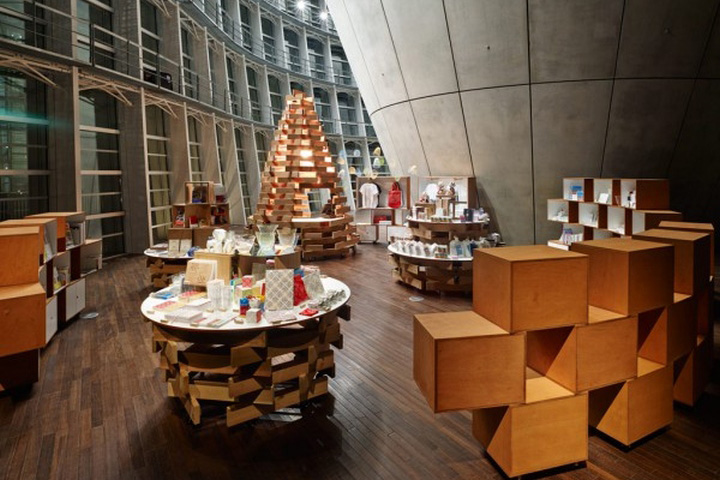

The National Art Center’s museum shop “Souvenir from Tokyo” is located on the first basement level and offers Tokyo’s latest picks in design and art unfettered by such constraints as popularity or genre. In addition to creating an original line of products featuring a new logo design for the opening of a new shopping space located on the first level lobby, we were tasked with designing a shop that will harmonize with the architectural design of the museum’s lobby space. Moreover, we planned a collaboration with Ishinomaki Laboratory, an organization aiming for the independent recovery of Ishinomaki in the wake of the Tohoku Earthquake to which we requested the manufacturing of fixtures.
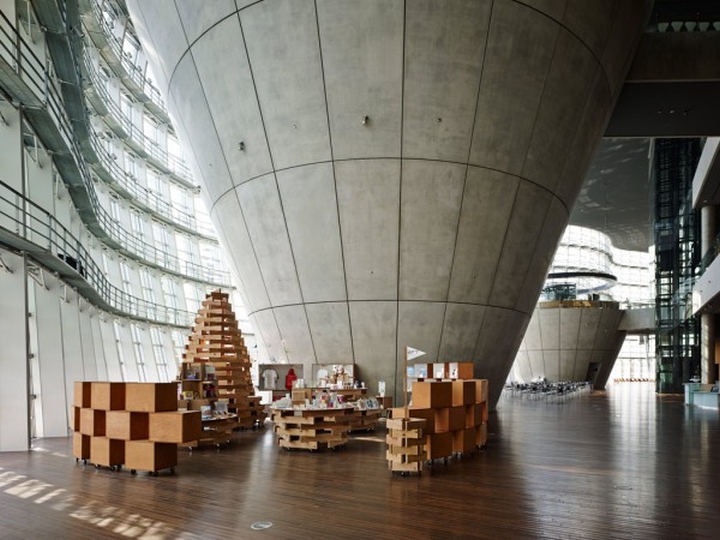
Using red cedar two-by-fours as base units, fixtures are assembled to produce circular flat display stands and towering register counter resembling a conical wooden hut. Additionally, products can be found inside box-shaped fixtures laminated in white on the inner side and stacked in a similarly circular fashion, which also function as a soft zoning of the shopping area. Furthermore, the varying sizes of pieces of timber drawing geometrical patterns bring out the playfulness of the souvenir shop.
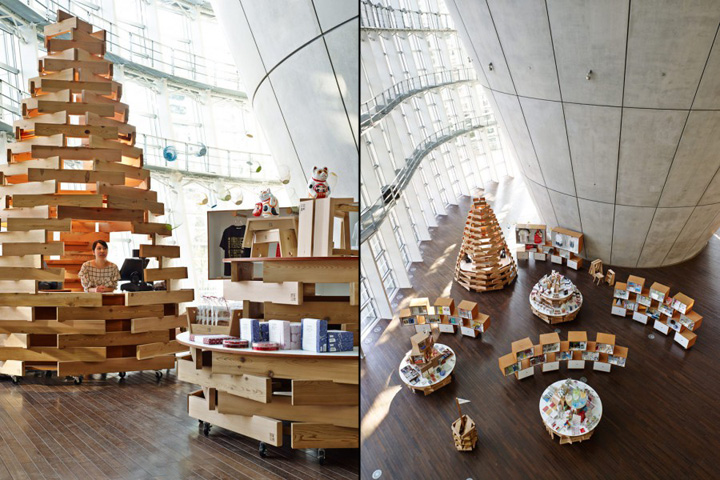
In addition to the usual enfolding circular disposition, mobile fixtures may be rearranged as needed in a flexible manner, such as into an open configuration in which all products are lined up along the line of flow. Alternatively, all the fixtures can be put away in the back during an event, thus producing constantly changing and evolving expressions.
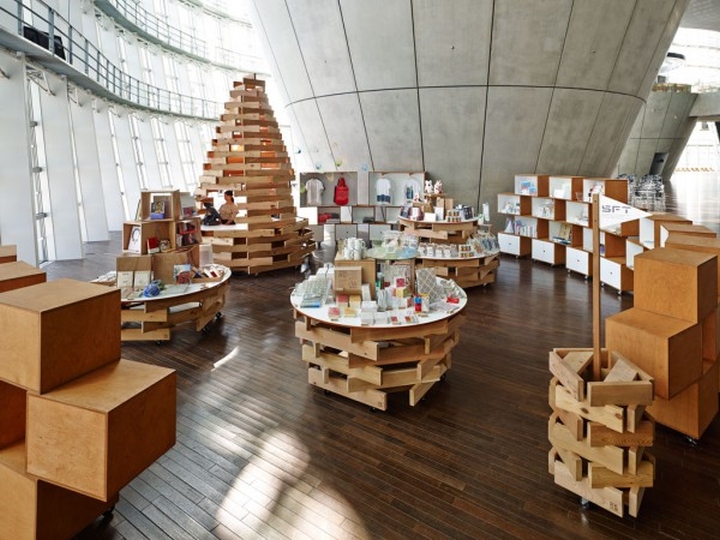
While the warmth of the wood-based materials creates a contrast with the surrounding grey tones, the shapes of the fixtures exhibit affinities with the museum’s elements, thereby bringing about a dynamic harmony with its architecture.
Designed by Torafu Architects

